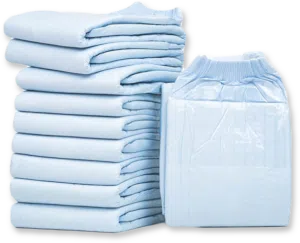
Understanding Incontinence: Types, Causes, and Treatment Options
Table of Contents
Understanding incontinence can be an overwhelming and sensitive experience for yourself and those close to you. However, it’s important to know that you’re not alone in this journey. In this comprehensive guide, we will explore the different types of incontinence, delve into their causes, and discuss the available treatment options. By increasing awareness and knowledge about incontinence, we aim to reduce the stigma surrounding it and provide support to individuals who may be navigating this condition. Let’s embark on this educational journey together.
Understanding Incontinence:
Incontinence is a common condition characterized by the involuntary loss of urine or feces. It affects millions of people worldwide, regardless of age or gender. To gain a deeper understanding, let’s explore the various types of incontinence:
 Stress Incontinence:
Stress Incontinence:
Stress incontinence occurs when physical activities such as coughing, sneezing, laughing, or exercising put pressure on the bladder, leading to urine leakage. It is most commonly seen in women and is often caused by weakened pelvic floor muscles, hormonal changes, pregnancy and childbirth, obesity, and certain medical conditions.
Urge Incontinence:
Urge incontinence, also known as overactive bladder, is characterized by a sudden and intense urge to urinate, followed by involuntary urine leakage. It can be caused by neurological conditions such as Parkinson’s disease or stroke, bladder irritation, urinary tract infections, and certain medications.
Overflow Incontinence:
Overflow incontinence occurs when the bladder doesn’t empty completely, leading to frequent or constant dribbling of urine. It can be caused by obstructions in the urinary tract, weakened bladder muscles, nerve damage, or certain medications.
Functional Incontinence:
Functional incontinence is not directly related to bladder or urinary tract dysfunction but occurs due to physical or cognitive impairments that prevent timely access to a bathroom. It can be caused by mobility issues, arthritis, dementia, or conditions that affect cognition and coordination.
Causes of Incontinence:
Understanding the underlying causes of incontinence is essential for effective management and treatment. While the causes can vary depending on the type of incontinence, here are some common factors to consider:
Muscle Weakness and Dysfunction:
Weakness in the pelvic floor muscles, which support the bladder and urethra, can lead to stress incontinence. Similarly, nerve damage or muscle disorders can disrupt the coordination between the bladder and the brain, resulting in urge incontinence.
Hormonal Changes and Pregnancy:
Hormonal fluctuations, especially during menopause, can contribute to weakened bladder and pelvic floor muscles. Additionally, the physical strain on these muscles during pregnancy and childbirth can lead to incontinence.
Structural Abnormalities and Obstruction:
Structural abnormalities, such as a prolapsed bladder or urethra, can cause incontinence. Additionally, obstructions in the urinary tract, such as urinary stones or tumors, can disrupt normal urine flow, leading to overflow incontinence.
Medical Conditions and Medications:
Certain medical conditions, such as diabetes, multiple sclerosis, Parkinson’s disease, and stroke, can affect nerve function and bladder control. Furthermore, specific medications like diuretics or sedatives can contribute to incontinence as a side effect.
Lifestyle Factors:
Lifestyle choices such as excessive caffeine or alcohol consumption, smoking, and obesity can also contribute to the development or exacerbation of incontinence.
Treatment Options for Incontinence:
Managing incontinence effectively involves a comprehensive approach tailored to the individual’s specific needs. Treatment options may include:
 Lifestyle Modifications:
Lifestyle Modifications:
Making lifestyle changes can have a significant impact on managing incontinence. Strategies such as bladder training, scheduled voiding, and fluid management can help regulate urination patterns and improve bladder control.
Bladder training involves gradually increasing the time intervals between bathroom visits to train the bladder to hold larger volumes of urine. Scheduled voiding involves following a predetermined schedule for bathroom visits to empty the bladder regularly, reducing the likelihood of accidents. Fluid management focuses on adjusting fluid intake, especially in the evening, to minimize nighttime bathroom visits.
Pelvic Floor Exercises:
Strengthening the pelvic floor muscles through exercises, such as Kegels, can provide support to the bladder and improve muscle control, especially in cases of stress or urge incontinence. Working with a physical therapist who specializes in pelvic floor rehabilitation can be beneficial. Kegel exercises involve contracting and relaxing the pelvic floor muscles to strengthen them over time. These exercises can be performed discreetly and at any time, making them a convenient option for managing incontinence. A physical therapist can provide guidance on proper technique and tailor an exercise program to individual needs.
Medications:
Depending on the type of incontinence, medications may be prescribed to relax the bladder, reduce spasms, or increase bladder capacity. It is essential to consult a healthcare professional for a proper diagnosis and appropriate medication options.
Medications for incontinence aim to address specific underlying causes or symptoms. For example, anticholinergic medications can help relax an overactive bladder, while alpha-blockers can relieve symptoms related to prostate enlargement in men. Hormone therapy may be considered for menopausal women with urinary symptoms related to hormonal changes.
Medical Devices and Interventions:
In certain cases, medical devices such as urethral inserts or pessaries may be recommended to support the bladder and prevent leakage. In more severe cases, surgical interventions such as sling procedures or artificial urinary sphincter implantation may be considered.
Medical devices and surgical interventions are typically reserved for individuals who have not found relief with conservative treatments or have more severe forms of incontinence. Urethral inserts and pessaries provide additional support to the bladder and urethra to prevent urine leakage. Surgical procedures aim to restore or improve the function of the urinary system, such as by supporting the bladder or reinforcing the urethral sphincter.
 Absorbent Products:
Absorbent Products:
For individuals experiencing incontinence, absorbent products can provide comfort and peace of mind. Various options, such as protective pads, adult diapers, or briefs, are available to manage different levels of incontinence. These products are designed to absorb moisture, neutralize odors, and provide a sense of security. They come in a range of sizes and styles to accommodate different preferences and needs.
By understanding the different types, causes, and available treatment options for incontinence, individuals can make informed decisions about managing their condition effectively. It is crucial to seek medical advice to develop a personalized treatment plan. Remember, you are not alone, and with the right knowledge, support, and resources, you can live a fulfilling life while managing incontinence with confidence and dignity.
 Stress Incontinence:
Stress Incontinence: Lifestyle Modifications:
Lifestyle Modifications: